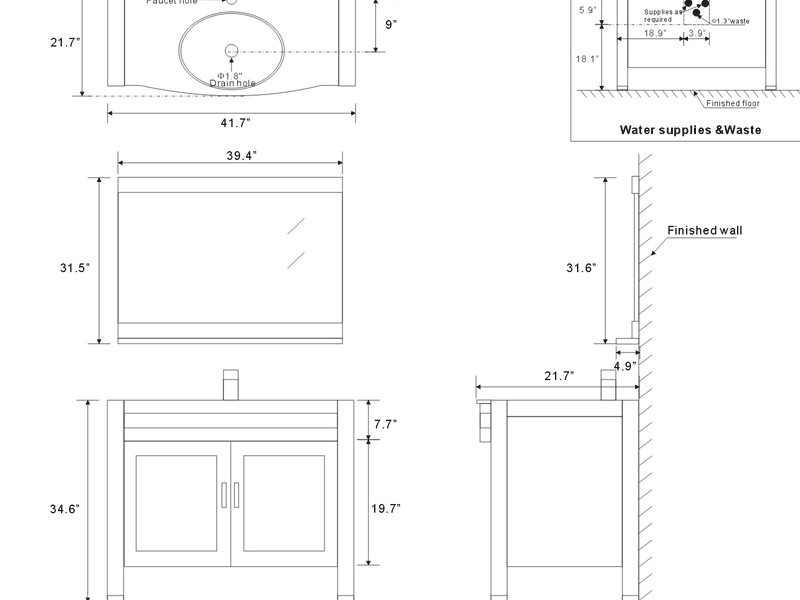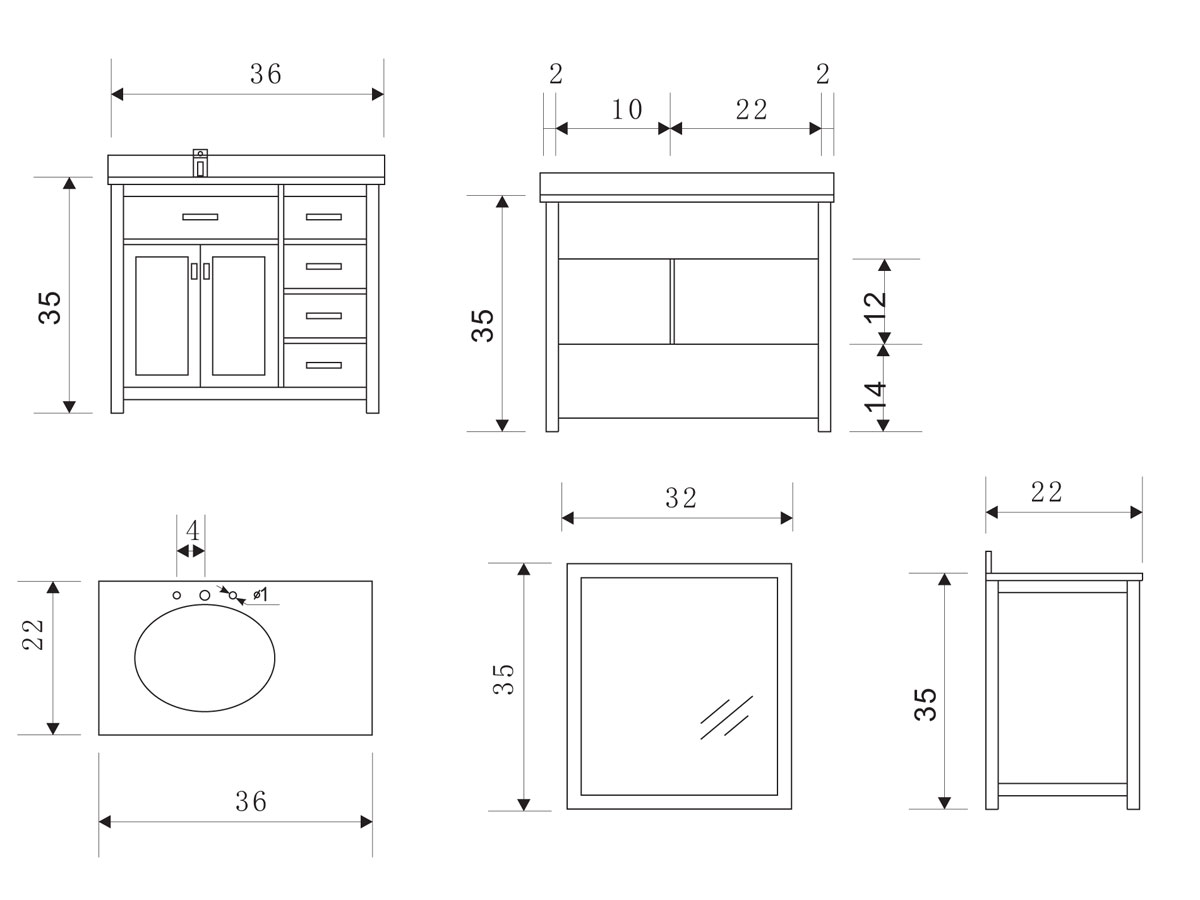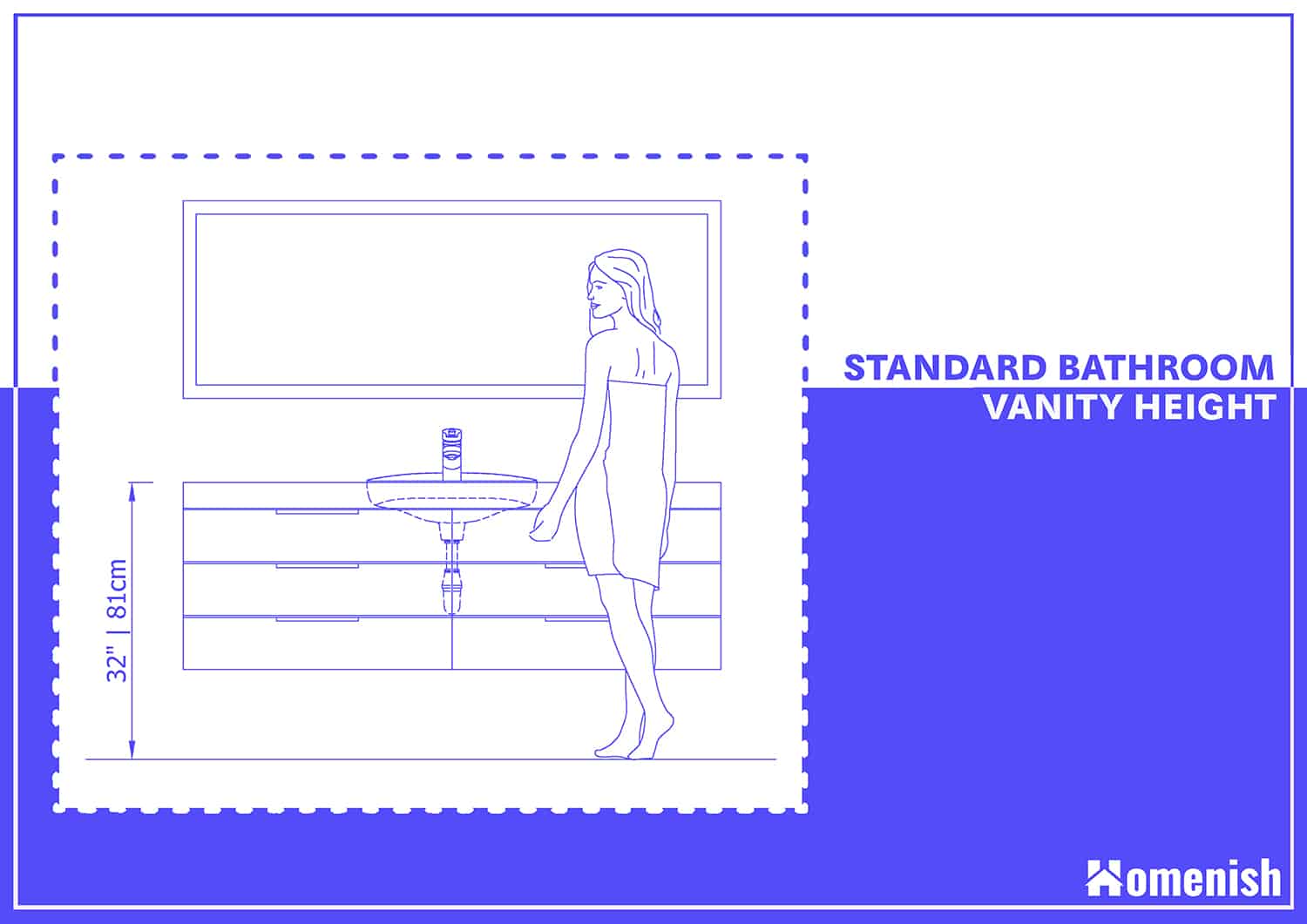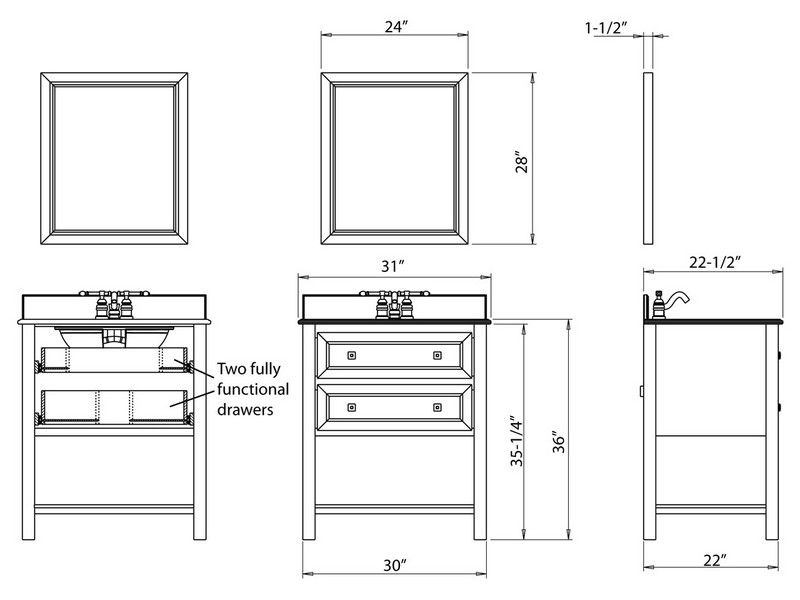Understanding Vanity Depth: A Comprehensive Guide to Bathroom Design
Related Articles: Understanding Vanity Depth: A Comprehensive Guide to Bathroom Design
Introduction
With great pleasure, we will explore the intriguing topic related to Understanding Vanity Depth: A Comprehensive Guide to Bathroom Design. Let’s weave interesting information and offer fresh perspectives to the readers.
Table of Content
- 1 Related Articles: Understanding Vanity Depth: A Comprehensive Guide to Bathroom Design
- 2 Introduction
- 3 Understanding Vanity Depth: A Comprehensive Guide to Bathroom Design
- 3.1 The Importance of Depth
- 3.2 Typical Vanity Depths: A Guide to Choosing the Right Fit
- 3.3 FAQs about Vanity Depth
- 3.4 Tips for Choosing the Right Vanity Depth
- 3.5 Conclusion
- 4 Closure
Understanding Vanity Depth: A Comprehensive Guide to Bathroom Design

The vanity, a central fixture in any bathroom, serves a multitude of purposes. It provides storage for toiletries, acts as a surface for grooming, and can even enhance the overall aesthetic of the space. While the style, material, and size of the vanity are crucial considerations, the depth of the vanity is often overlooked, yet it plays a significant role in both functionality and visual appeal.
The Importance of Depth
The depth of a vanity, measured from the front edge to the back wall, directly impacts the usability and storage capacity of the fixture. A vanity that is too shallow can make accessing items difficult, while an overly deep vanity might make the bathroom feel cramped.
Here’s a breakdown of how depth affects various aspects of a vanity:
- Storage: A deeper vanity allows for more storage space, accommodating larger items like hair dryers, styling tools, or even baskets for organizing smaller items.
- Accessibility: A vanity with adequate depth provides ample space for users to move around comfortably, especially for those with mobility limitations.
- Countertop Space: A deeper countertop offers more surface area for placing toiletries, applying makeup, or simply setting down a glass of water.
- Visual Impact: The depth of the vanity can influence the overall feel of the bathroom. A deep vanity can create a sense of grandeur and spaciousness, while a shallower vanity might be more suitable for smaller bathrooms.
Typical Vanity Depths: A Guide to Choosing the Right Fit
The typical depth of a vanity ranges from 18 inches to 24 inches, with 21 inches being the most common standard. This depth offers a balance between sufficient storage and comfortable accessibility.
Here’s a breakdown of typical vanity depths and their suitability for different scenarios:
- 18 inches: This depth is ideal for smaller bathrooms or spaces where maximizing floor space is a priority. However, it might limit storage capacity and accessibility, especially for larger items.
- 21 inches: This depth is considered the standard and offers a good balance between storage, accessibility, and visual appeal. It is suitable for most bathroom sizes.
- 24 inches: This depth provides ample storage space and countertop area, making it ideal for larger bathrooms or families with multiple users. However, it might make the bathroom feel smaller, especially in compact spaces.
Factors to Consider When Choosing Vanity Depth:
- Bathroom Size: Consider the overall dimensions of your bathroom and the amount of space available for the vanity.
- Storage Needs: Determine the amount of storage space you require and choose a depth that accommodates your needs.
- Accessibility: If accessibility is a concern, opt for a vanity with a depth that allows for comfortable movement around the fixture.
- Aesthetic Preferences: The depth of the vanity can influence the overall look of your bathroom. Consider the style and size of the vanity in relation to the rest of the bathroom design.
FAQs about Vanity Depth
Q: Can I install a vanity with a different depth than the standard 21 inches?
A: Yes, you can install a vanity with a different depth. However, it’s important to consider the impact on functionality and aesthetics. You might need to adjust the placement of the vanity within the bathroom or make modifications to plumbing and electrical connections.
Q: What are some ways to maximize storage in a shallow vanity?
A: Consider using organizers, trays, and vertical storage solutions to maximize space within a shallow vanity. You can also opt for a vanity with drawers instead of open shelves to maximize storage capacity.
Q: Is it possible to have a deep vanity in a small bathroom?
A: While a deep vanity might make a small bathroom feel cramped, it’s not entirely impossible. Consider choosing a vanity with a floating design or a smaller countertop to minimize the visual impact of depth.
Tips for Choosing the Right Vanity Depth
- Measure your bathroom space: Accurately measure the available space for the vanity, including the distance from the walls and any plumbing fixtures.
- Consider your storage needs: Determine the amount of storage you require and choose a depth that accommodates your needs.
- Think about accessibility: If accessibility is a concern, choose a vanity with a depth that allows for comfortable movement around the fixture.
- Visualize the space: Use online tools or create a sketch to visualize the impact of different vanity depths on the overall look of your bathroom.
Conclusion
The depth of a vanity is a crucial factor to consider when designing or renovating your bathroom. By choosing a vanity with the appropriate depth, you can create a functional and visually appealing space that meets your individual needs. Remember to consider your bathroom size, storage needs, accessibility requirements, and aesthetic preferences when selecting the ideal vanity depth for your bathroom.







Closure
Thus, we hope this article has provided valuable insights into Understanding Vanity Depth: A Comprehensive Guide to Bathroom Design. We appreciate your attention to our article. See you in our next article!